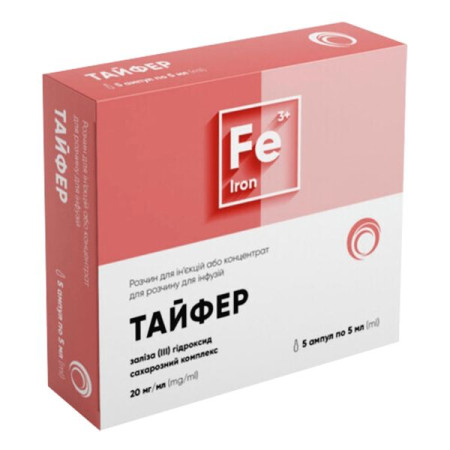Tornid RG solution for injection 5 mg/ml ampoule 4ml No. 5

Tornid RG injection solution is indicated for the treatment of edema and/or effusions caused by heart failure, if intravenous administration of the drug is necessary, for example, in the case of pulmonary edema due to acute heart failure.
Composition
Active ingredient: torasemide.
1 ml of solution for injection contains torasemide in terms of 100% dry matter - 5 mg.
Excipients: polyethylene glycol (macrogol) 400, trometamol, sodium hydroxide, water for injections.
Contraindication
Hypersensitivity to the active substance, sulfonylurea drugs and to any of the excipients of the medicinal product. Renal failure with anuria. Hepatic coma or precoma. Arterial hypotension. Hypovolemia. Hyponatremia. Hypokalemia. Acute urinary retention, e.g. due to prostatic hypertrophy. Breastfeeding.Method of application
Treatment should be started with a single dose of 2 ml of TORNID RG, equivalent to 10 mg of torasemide per day. If the effect is insufficient, the single dose can be increased to 4 ml of TORNID RG, equivalent to 20 mg of torasemide. If the effect is still insufficient, short-term (no more than 3 days) therapy with a daily dose of 8 ml of TORNID RG, equivalent to 40 mg of torasemide, can be used.
Features
Pregnant women
There are no reliable data on the effects of torasemide on pregnant women.
Children
The safety and efficacy of the drug TORNID RG in children and adolescents under the age of 18 have not been established.
Drivers
Even when used in recommended doses, torasemide may adversely affect the reaction rate when driving vehicles or other mechanisms.
Overdose
Symptoms of intoxication
Typical symptoms are unknown. Overdose may cause excessive diuresis, including the risk of excessive loss of water and electrolytes, drowsiness, confusional state, symptomatic hypotension, circulatory collapse and digestive disorders.
Treatment of overdose. Specific antidote is unknown. Symptoms of intoxication disappear, usually with a reduction in dosage and discontinuation of the drug and with appropriate fluid and electrolyte replacement (monitoring is required). Torasemide is not removed from the blood by hemodialysis.
Treatment for hypovolemia: fluid replacement.
Treatment for hypokalemia: prescribing potassium supplements.
Treatment in case of circulatory collapse: place the patient in the supine position and, if necessary, prescribe symptomatic therapy.
Anaphylactic shock (immediate measures)
At the first appearance of skin reactions (such as urticaria or redness of the skin), the patient's agitated state, headache, increased sweating, nausea, cyanosis, venous catheterization should be performed; the patient should be placed in a horizontal position, ensure free air flow, and oxygen should be administered. If necessary, further intensive care measures should also be used (including the administration of epinephrine, glucocorticoids, and volume replacement).
Side effects
Nervous system disorders: Common: headache, dizziness (especially at the beginning of treatment). Uncommon: paresthesia. Very rare: syncope, cerebral ischemia, confusion.
On the part of the organs of vision. Very rare: visual impairment.
From the side of the organs of hearing and labyrinth. Very rare: tinnitus, hearing loss.
Cardiac system: Very rare: myocardial ischemia, arrhythmia, angina pectoris, acute myocardial infarction.
Vascular disorders: Very rare: thromboembolic complications, arterial hypotension, as well as circulatory disorders in the heart and disorders of the central circulation.
Gastrointestinal disorders: Common: Gastrointestinal disorders (e.g. loss of appetite, stomach pain, nausea, vomiting, diarrhoea, persistent constipation), especially at the beginning of treatment. Uncommon: Dry mouth. Very rare: Pancreatitis.
Hepatobiliary disorders: Common: increased concentration of certain liver enzymes (gamma-glutamyl transpeptidase) in the blood.
Skin and subcutaneous tissue disorders: Very rare: allergic reactions (e.g. itching, rash, photosensitivity), severe skin reactions.
Musculoskeletal and connective tissue disorders: Common: muscle spasms (especially at the beginning of treatment).
From the kidneys and urinary tract. Sometimes: in case of impaired urination (for example, with prostatic hypertrophy), increased urine production may be accompanied by urinary retention and bladder distension.
Interaction
Torasemide, especially in high doses, may enhance the ototoxic and nephrotoxic effects of aminoglycoside antibiotics, such as kanamycin, gentamicin, tobramycin and cytostatics - active platinum derivatives, as well as the nephrotoxic effects of cephalosporins.
Storage conditions
Store in original packaging at a temperature not exceeding 25°C. Keep out of the reach of children.
Shelf life: 2 years.
There are no reviews for this product.
There are no reviews for this product, be the first to leave your review.
No questions about this product, be the first and ask your question.













